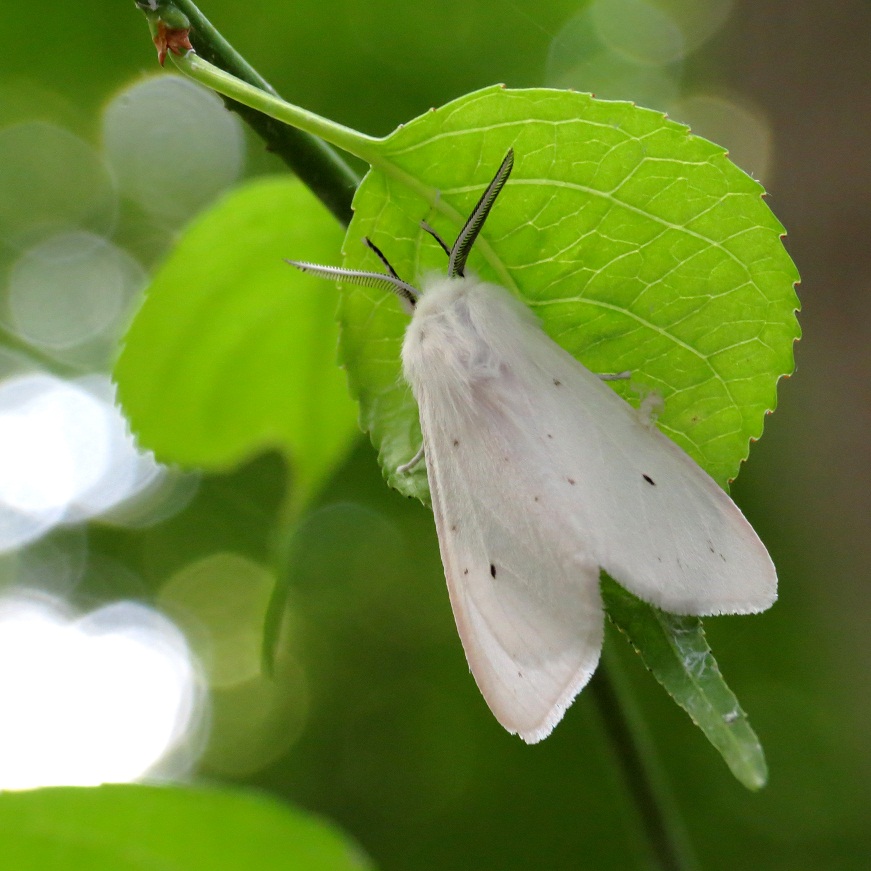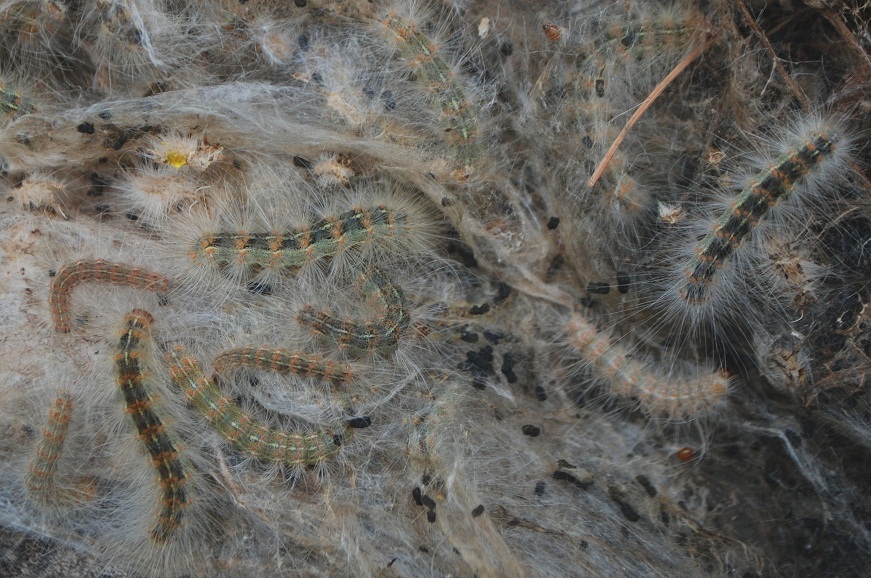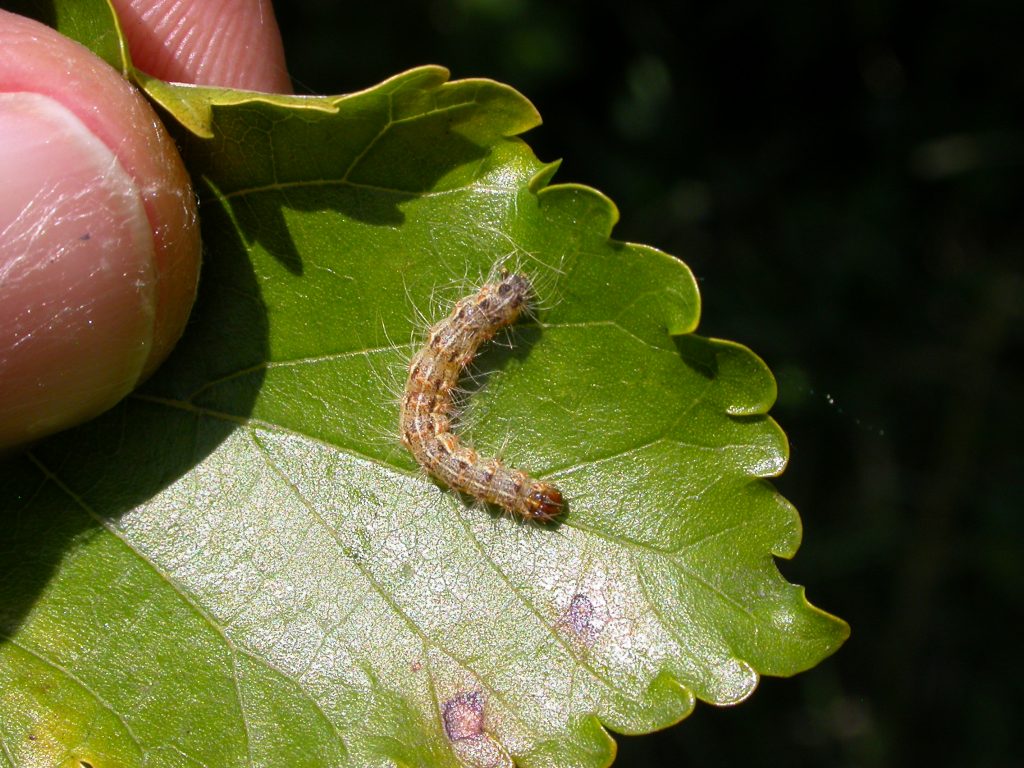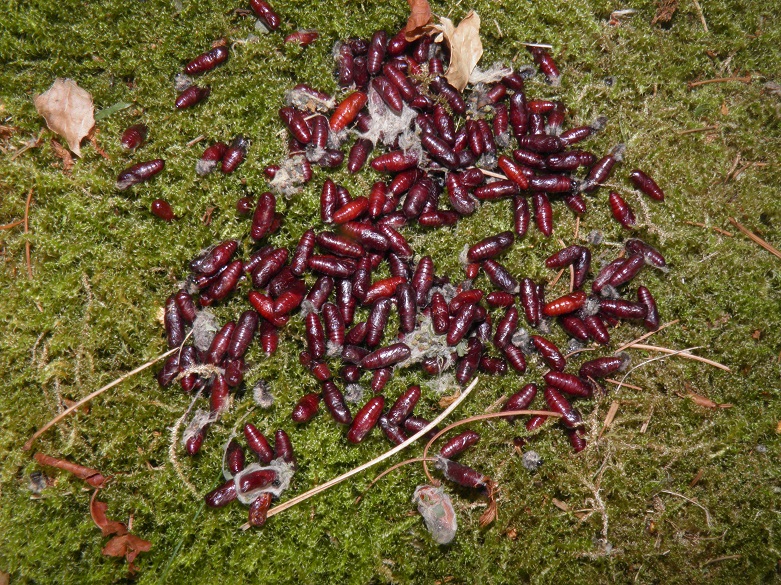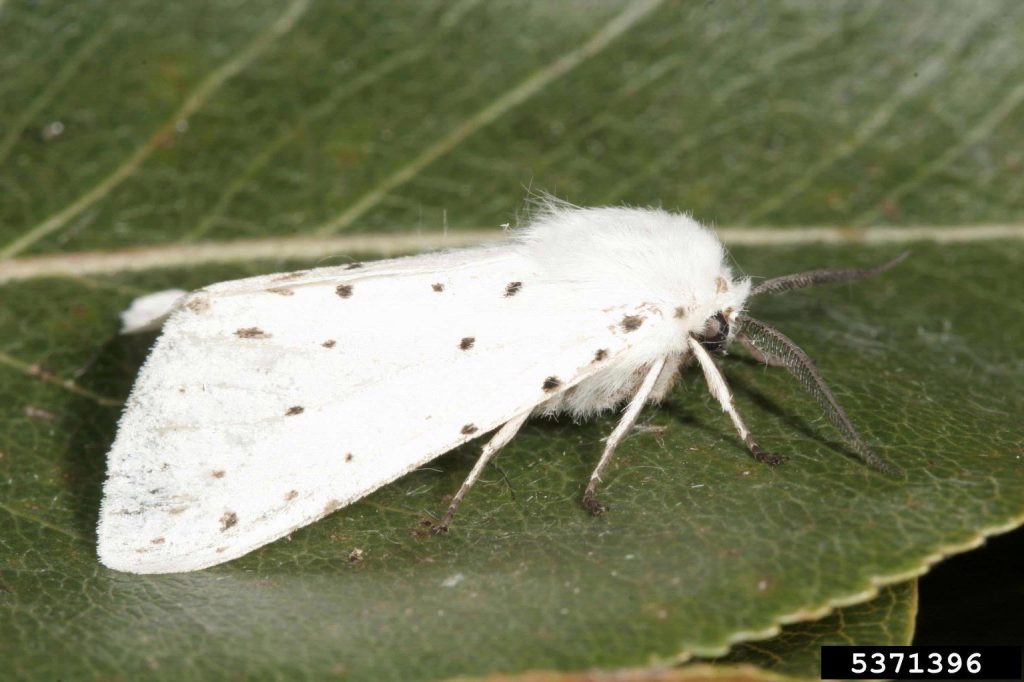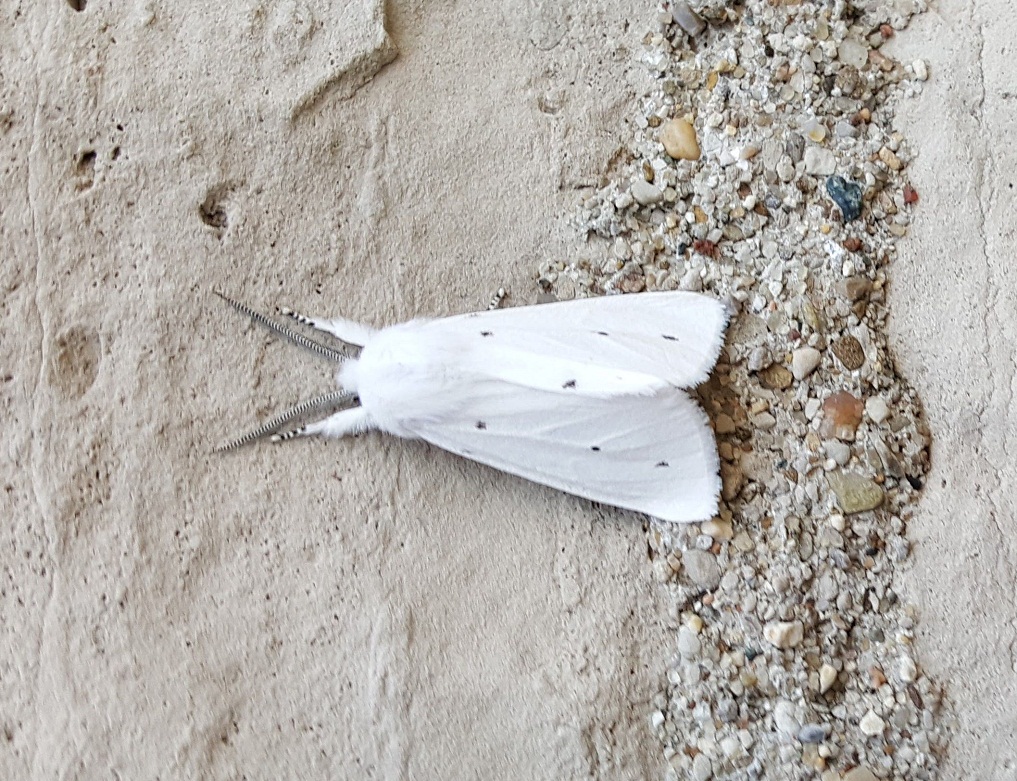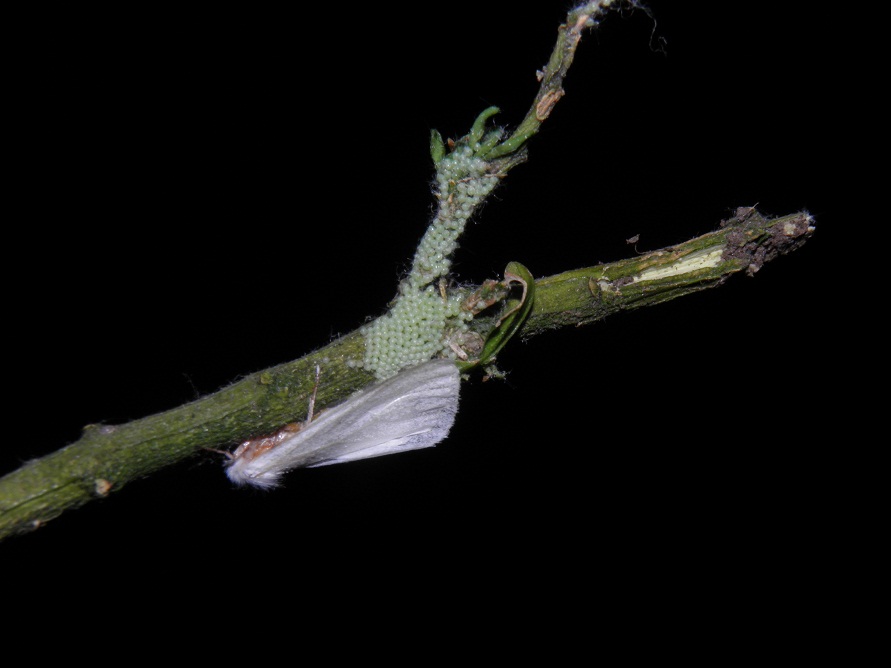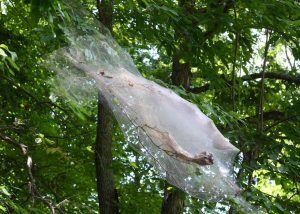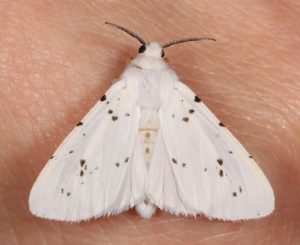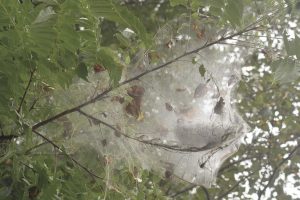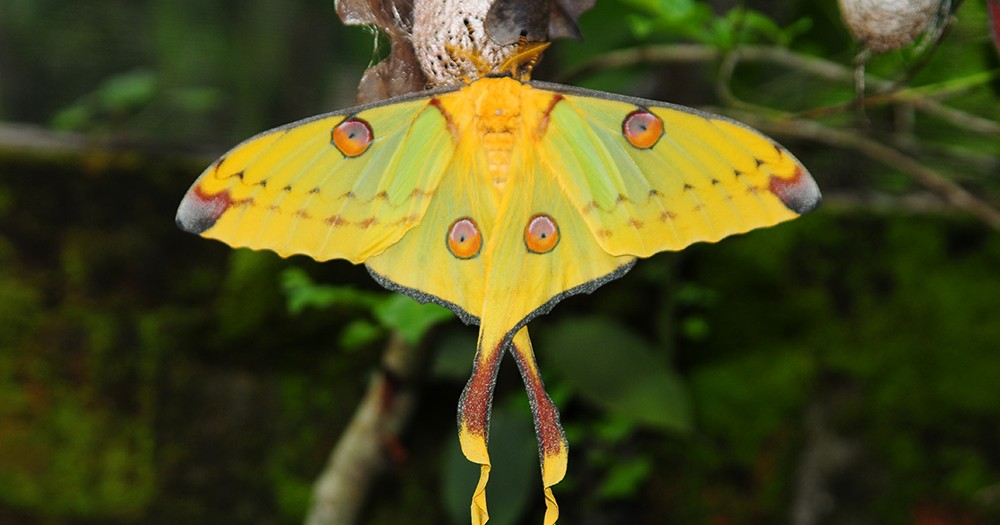Fall Webworm (Hyphantria cunea)
Fall webworm of the Erebidae family is indigenous to parts of North America from Canada up to Mexico. However, it became invasive in Europe and parts of Asia also eventually. The caterpillar of this species builds large messy nests or webs on limbs of different hardwood trees in late summer or early fall, leading to their name.
upload.wikimedia.org
Scientific Classification
- Family: Erebidae
- Genus: Hyphantria
- Scientific Name: Hyphantria cunea
Description and Identification
Caterpillar
The color of the larva varies in the northern and southern races. Those from the north have a black head, alongside a greenish or yellowish body with dark stripes on their back. White hairs are seen rising from the black or red tubercles. On the other hand, the southern bound larvae are red-headed with a yellowish tan body, reddish-brown tubercles, and brownish hair rising. The larva’s average growth is 3.5 cm, and they feed on only the leave surfaces at the beginning, later consuming the entire leaves.
Adult Moth
Sexual Dimorphism: Present
Color and Appearance: The wing colorations vary as per the regions. In North America, they appear white, while down south, they are spotted in brown or black. In the hind wings, however, the markings are not too prominent though.
Whether opened or closed, the patterns more or less remain the same.
It mostly has a hairy appearance, with the front legs having orange or yellow patches. The abdomen, on the other hand, is marked with brown hairs.
Average Wingspan: 3.5 – 4.2 cm
Flight Pattern: Not recorded
Season: June – October
Quick Facts
| Distribution | Native: North America (Canada up to Mexico) Invasive: Europe (France to the Caspian Sea), parts of Central Asia including Kazakhstan, Uzbekistan, Turkmenistan, Kyrgyzstan, also parts of China, Korea, and Southern Mongolia |
| Habitat | Forests, parks, gardens, and every place where their host plant grows |
| Predators | Ant species like the little black ant, beetle species like the spotted lady beetle, wasps, and several flies (they are parasitized by) |
| Lifespan of Adults | Not recorded |
| Host Plants | American elm, black walnut, pecan, hickory, mulberry, Asian white birch |
| Adult Diet | Leaves of their host plants |
Did You Know
- They are gregarious, and the larva dwells in big groups in the webs created by them.
- The webs made by the larva help trapping heat, helping in their faster growth and development.
- The fall webworm caterpillar that thrives in groups mostly encounters any threat by shaking, jerking, or even stinging with their hairs or spines.
- Considered a pest, they are known to damage portions of the tree where they make their branches and defoliate leaves, but not kill them. However, large, matured trees in proper condition have lesser chances of infestation.
- The fall webworm and tent caterpillar are mistakenly referred to as bagworms, yet each varies from the other in several aspects. The eastern tent caterpillar thrives in spring while the fall webworm is mostly seen in summer. The tent caterpillar larva has a black body with markings of blue and white, whereas the adults have a reddish-brown body with white stripes.
Scientific Classification
- Family: Erebidae
- Genus: Hyphantria
- Scientific Name: Hyphantria cunea

